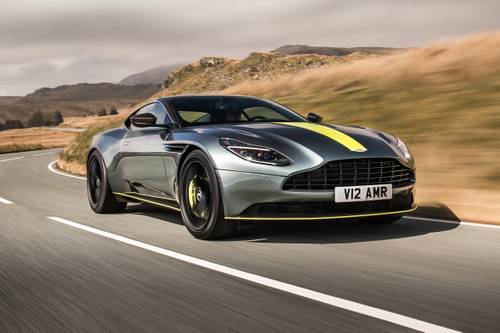Key points:
- Aston Martin has parted ways with its CEO
- Q1 Results were a loss of £47 million
- It’s what happens next that matters
- Citi Downgrades Aston Martin, AML, To Neutral
Aston Martin Lagonda (LON: AML) shares are broadly unchanged at 1% up this morning on the back of two pieces of news. Firstly, the Q1 results for 2022, and secondly the tossing overboard of the current CEO and replacement.
First, the CEO announcement. Tobias Moers is out as CEO. The formal announcement says “by mutual agreement” which might be a polite way of putting it. The gossip around is that actually there was something of a clash of wills and opinions between Moers and Lawrence Stroll. Given Stroll’s position as a major shareholder and also Chairman that was only going to resolve one way.
The replacement is Roberto Fedeli, formerly of Ferrari. This would seem to indicate that the gossip over the clash has some merit to it – the difference of opinion was whether Aston should cuddle up to AMG (ie, Mercedes, a 20% shareholder, and the engine provider) or to Ferarri. Stroll was said to favour the Italians and lo, that’s what might be happening.

Also Read: What Do Quarterly Earnings Mean for Investors?
Q1 results were OK, not great, and not terrible. The reported loss of £47.7 million was largely in line with expectations and as ever it is new news that moves share prices.
There are points of interest – wholesale volumes were down while revenues were up over the quarter YonY. That shows that cash collected per unit, per vehicle, is rising, a good sign. It’s also a sign of deliveries of the very highly-priced Valkyrie of course, but revenue per “normal” car did rise.
What matters for the share price at Aston is what happens next of course. As we’ve noted before Invesco buys the Aston Martin turnaround story by buying in in volume. Aston’s shares are still volatile on news though.
The reason for the volatility – what we might call the nervousness even – in the Aston price is simply that the future is still uncertain. AML has some rather high coupon debt financing its working capital. There are those ongoing losses – which could be fine. For a goodly part of what is going on is the gearing up to be producing the DBX – the new SUV – in volume. The aim here is to break out of being purely a very specialist producer of sports cars and gain a larger and more stable sales base.
It’s entirely possible this will work – orders received are announced as being 60% up. It’s also possible that this won’t work and the farm has rather been bet upon it doing so. The base problem that being an independent developer of high-performance cars is a very expensive and risky place to be. The costs of new models are high, there’s no great volume sales base they can be amortised over.
The likely determinant of the Aston Martin share price is news of the actual sales of that DBX model over time. For that’s what the company’s revenues and accounts really depend upon.




